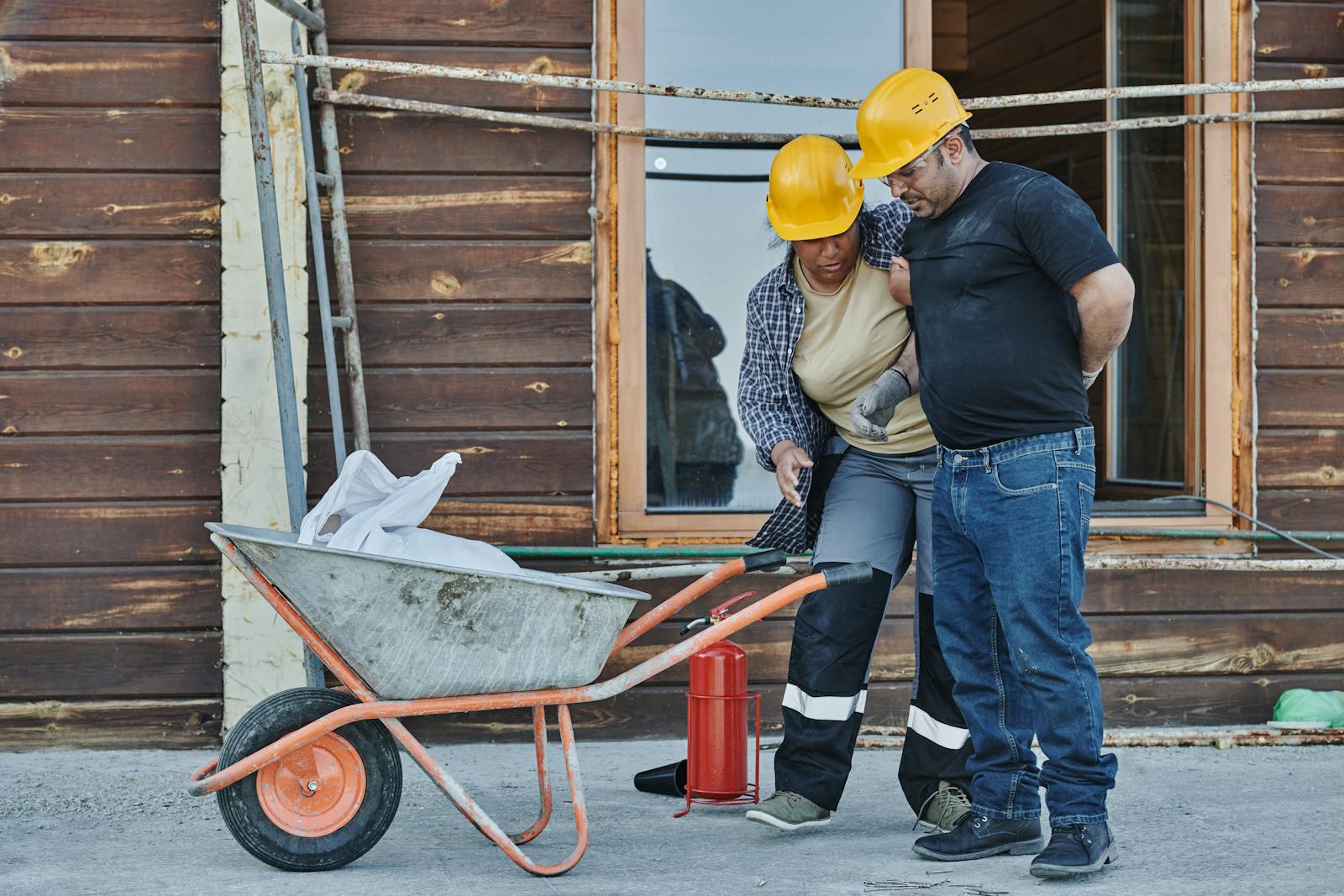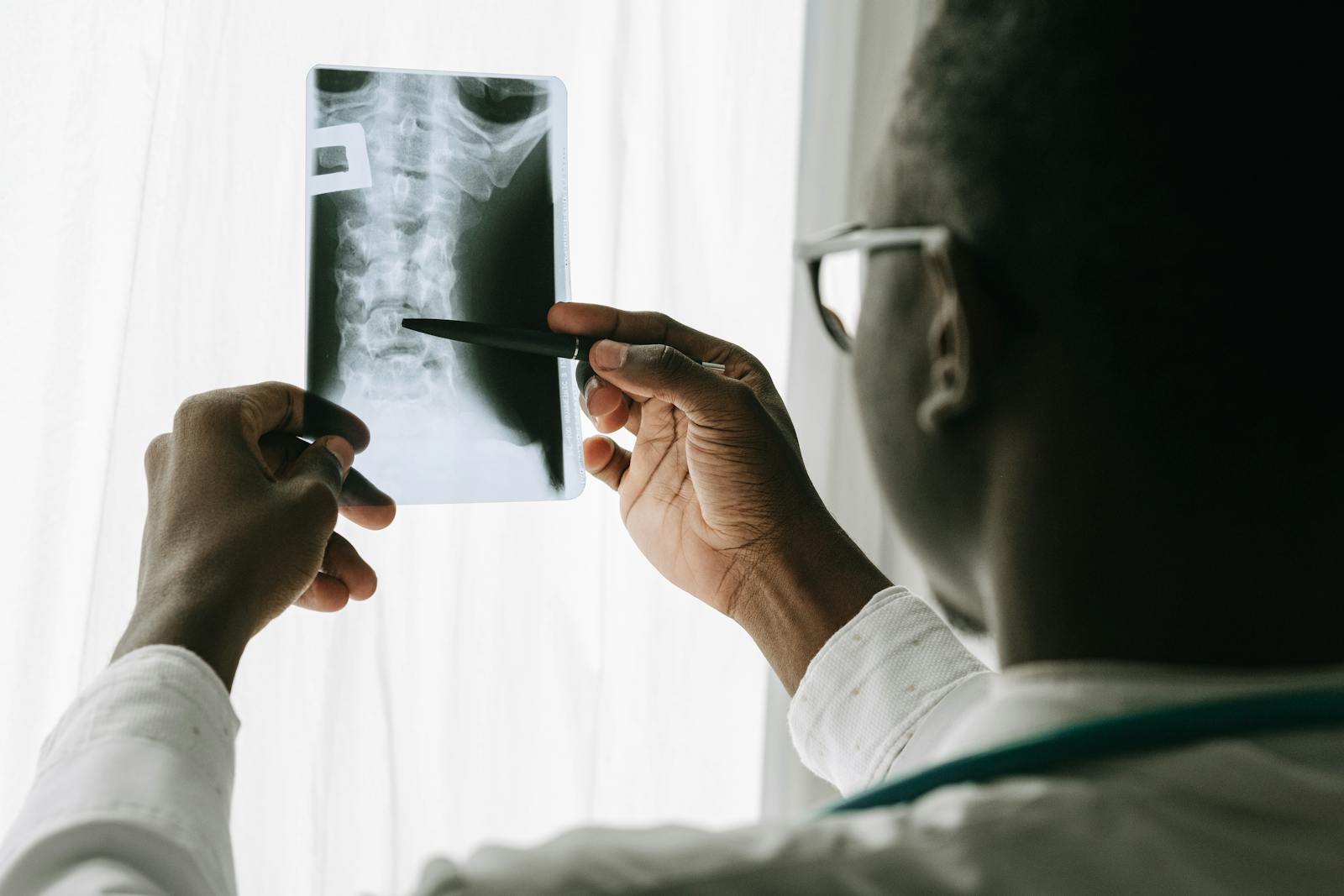The damaging effects of spinal injuries extend beyond the physical world, infiltrating every facet of an individual’s life. From the challenge of managing persistent pain to the emotional toll of diminished mobility, the impacts are profound and far-reaching. However, strategies do exist to help individuals navigate this challenging landscape. By exploring avenues such as mindfulness practices, physical therapy, and nurturing a robust support network, those affected can start to regain some semblance of their previous quality of life. As we investigate further into this issue, it becomes clear that understanding and effectively managing these impacts is paramount.
Understanding Spine Injuries
Exploring the world of spine injuries, it is important to understand that these are serious medical conditions that can greatly impact an individual’s quality of life, requiring a thorough assessment and customized treatment strategies. These injuries are not only physically debilitating but can also be emotionally taxing, often leading to significant lifestyle changes. The causes of spine injuries can be multifaceted, stemming from motor vehicle accidents, falls, sports injuries, or diseases such as osteoporosis and cancer.
Spine injury prevention is an essential aspect of reducing the prevalence of these debilitating conditions. This involves promoting safe practices such as proper lifting techniques, regular exercise to strengthen the back muscles, and maintaining an overall healthy lifestyle. Additionally, early detection through regular check-ups can also be instrumental in preventing the progression of diseases that can lead to spine injuries.
In essence, understanding spine injuries involves gaining a thorough knowledge of their causes and implications. It also requires a focus on prevention strategies, which can greatly reduce the risk of these life-altering conditions. Without a doubt, the more we comprehend the complexities of spine injuries, the better equipped we are to prevent and manage them.
Physical Impacts of Spinal Trauma
Having gained an understanding of the causes and prevention of spine injuries, we now turn our attention to the profound physical impacts of spinal trauma, which can range from pain and discomfort to severe mobility issues.
One of the most immediate and noticeable effects of spinal trauma is pain, varying from mild discomfort to debilitating agony. Pain management is essential and often involves medication, physical therapy, and lifestyle changes. Implementing trauma prevention strategies can assist in avoiding further damage and pain.
Mobility challenges present another significant physical impact. Depending on the severity and location of the injury, individuals may experience difficulty moving or, in extreme cases, complete paralysis. This can drastically limit independence and necessitate the use of assistive devices such as wheelchairs or braces.
Nutrition also plays a pivotal role in recovery and management of spinal trauma. A balanced spinal injury diet, rich in protein, vitamins, and minerals, can support tissue repair and maintain overall health. Adequate hydration is also essential, aiding in digestion and preventing constipation, a common issue for those with spinal injuries.
The physical impacts of spinal trauma are significant and life-altering. However, through adequate medical care, lifestyle modifications, and a supportive environment, individuals can navigate these challenges and maintain a good quality of life.
Psychological Consequences of Spinal Damage
Beyond the physical ramifications, spinal trauma often precipitates profound psychological consequences, impacting the mental and emotional well-being of those affected. Such injuries can severely disrupt one’s mental health, leading to conditions like depression, anxiety, and post-traumatic stress disorder. The sudden shift in lifestyle, loss of autonomy, and the ongoing physical discomfort can result in a heightened sense of vulnerability and helplessness.
However, these psychological challenges aren’t insurmountable. Developing effective coping mechanisms can greatly aid in managing these mental health issues. Cognitive-behavioral therapy (CBT) has proven effective in altering negative thought patterns, instilling a more positive mindset. Mindfulness practices like meditation can also provide a sense of calm and control amidst the chaos. Regular consultations with a mental health professional are vital, providing an avenue to express feelings and fears.
Peer support groups too can play a pivotal role. Interacting with others who are going through similar experiences can provide comfort, reduce feelings of isolation, and offer practical advice. Ultimately, addressing the psychological consequences of spinal damage is as vital as treating the physical injuries, and an all-encompassing approach can greatly improve the quality of life post-injury.
Spine Injuries and Social Relationships
In addition to the psychological impacts, spinal injuries can dramatically alter the dynamics of social relationships, reflecting another dimension of the life changes experienced by those with spinal damage. This can often be exacerbated by the spine injury stigma that permeates society, leading to feelings of isolation and loneliness.
Bearing the burden of a spine injury, individuals may feel like outsiders, disconnected from their previous social circles. The social stigma often surfaces in subtle ways, shaping the attitudes, beliefs, and behaviors of others. This unexpected change can strain relationships, forcing both the individual and their loved ones to adapt.
Relationship adaptations become essential in this scenario. Open communication is a key factor, allowing for mutual understanding and empathy. This can help counteract the negative effects of the stigma, fostering an environment of support and acceptance. Additionally, it’s important to maintain social activities as much as possible, as this can aid in maintaining a sense of normalcy and promote positive mental health.

Necessity of Professional Medical Care
While managing the physical and social challenges of a spine injury, seeking professional medical care becomes an indispensable component of the healing process. Guiding through the complexities of medication management and considering the possible surgical options necessitates the assistance of medical professionals.
Being under the care of a healthcare team doesn’t just guarantee the correct diagnosis and treatment plan, but also provides emotional support during this difficult time. Their expertise can help you understand your condition better, and lead you in making informed decisions about your treatment.
When it comes to professional medical care for spine injuries, consider the following:
- Medication management: Medical professionals can advise you on the proper use of prescribed medications, reducing the possibility of side effects and ensuring effectiveness.
- Surgical options: Doctors can provide a thorough understanding of the potential benefits and risks of different surgical procedures, helping you determine the best course of action.
- Follow-up care: Regular check-ups allow for adjustments to the treatment plan if necessary, and ensure complications are caught early.
Role of Physical Therapy in Recovery
Physical therapy plays an essential role in the journey towards recovery from spine injuries, offering a non-invasive approach that aims to improve mobility and function, alleviate pain, and foster overall well-being. It is a thorough program tailored to the patient’s individual needs and capabilities.
The core of physical therapy consists of Therapeutic Exercises, carefully designed to strengthen the body, particularly the back and abdominal muscles, which are vital in supporting the spine. These exercises also enhance flexibility and endurance, promoting a quicker and more efficient recovery process. The kind of exercise that is prescribed will depend on the severity and type of injury, and it’s important to collaborate closely with your physical therapist to ensure they are performed correctly and safely.
Mobility Devices also form an integral part of the physical therapy regime. These instruments, which may include walkers, crutches, or wheelchairs, assist patients in regaining their independence by enhancing mobility. They also help in reducing the risk of falls and subsequent injuries. It’s important to understand that using these devices is not a sign of weakness, but rather a step towards recovery. With time, patience, and consistent therapy, many patients can gradually shift away from these aids.
Adaptive Strategies for Daily Living
Managing daily life after a spine injury often requires the adoption of adaptive strategies, which are designed to simplify tasks, enhance independent living, and improve the patient’s quality of life. The use of adaptive furniture and assisted technology can play a substantial role in this process, making day-to-day activities more manageable and less strenuous for patients.
Adaptive furniture, for example, may include items like height-adjustable beds and chairs, tables with adjustable angles, or shower seats, all of which are designed to reduce strain on the back and spine. Assisted technology, on the other hand, can range from simple tools like grabbers or reachers to more complex devices such as voice-activated home systems.
Here are a few adaptive strategies that can make a noteworthy difference:
- Utilizing adaptive furniture: Investing in furniture that accommodates your physical needs can greatly enhance your comfort and autonomy.
- Leveraging assisted technology: Technologies designed to facilitate everyday tasks can substantially reduce the physical strain and promote independence.
- Incorporating physical therapy into daily routines: Regular and targeted exercise under the guidance of a therapist can help maintain and improve mobility.
The Importance of a Support Network
Exploring the path of recovery after a spine injury can be a challenging task, often filled with physical and emotional complexities. This journey, however, becomes less intimidating when shared with a robust support network, comprising caring relationships and accessible community resources. These networks not only provide emotional support and a sense of belonging, but also serve as practical resources for guidance, creating a reinforcing structure for effective coping strategies.
Building Strong Relationships
In the wake of spine injuries, cultivating robust relationships forms an essential cornerstone, offering emotional bolstering and practical assistance during the challenging recovery journey. Fostering these relationships involves two pivotal elements: Relationship Communication and Trust Building.
- Relationship Communication: Open, honest communication is paramount. This includes expressing your needs, fears, and progress, fostering understanding and empathy.
- Trust Building: Trust is built over time and requires consistency. Sharing your journey with trusted friends and family can reinforce this bond.
- Mutual Support: Relationships are reciprocal. Even while you’re healing, there are ways to support your loved ones emotionally, further strengthening these bonds.
Leveraging Community Resources
Beyond the confines of personal relationships, a wellspring of community resources stands ready to bolster your recovery journey, underscoring the undeniable importance of a robust support network. Engaging with these resources through community outreach and resource mobilization can profoundly impact your healing process, fostering resilience and optimism. Local support groups, rehabilitation centers, and nonprofit organizations often provide a wealth of services, from physical therapy to counseling, designed to meet the unique needs of individuals with spinal injuries. These resources, coupled with digital platforms that offer virtual communities and informational resources, can greatly enhance your coping strategies. Remember, embracing these community resources is not a sign of weakness but a reflection of your determination to improve your quality of life despite adversity.

Building Emotional Resilience Post-Injury
In the aftermath of a spine injury, fostering emotional resilience becomes an essential part of the recovery process. This quality, defined as the ability to adaptively respond to stress and adversity, can have a profound impact on a patient’s journey towards healing. In the following section, we will explore the fundamental aspects of emotional resilience, provide practical strategies for resilience building, and discuss its specific role in the context of recovering from a spine injury.
Understanding Emotional Resilience
After a spine injury, cultivating emotional resilience becomes an essential component of the recovery process, as it equips individuals with the ability to adapt to adversity, manage stress, and rebuild their lives. Resilience theories propose that resilience is not a fixed trait but can be developed over time, and emotional intelligence plays a vital role in this development.
Understanding emotional resilience involves recognizing the following:
- Adaptive Capacity: The ability to adjust to new or challenging circumstances and recover from setbacks.
- Stress Management: The ability to regulate emotions, maintain calm, and reduce or prevent the harmful effects of stress.
- Life Rebuilding: The process of redefining one’s life, goals, and sense of self in the aftermath of a significant injury.
Strategies for Resilience Building
Building emotional resilience post-injury involves implementing strategic methods that not only strengthen one’s adaptability and stress management skills, but also facilitate the critical process of life rebuilding. Key strategies include mindset shifts and resilience training. Mindset shifts are about transforming one’s perspective, focusing on possibilities rather than limitations. It’s about recognizing that despite the injury, life continues, and can still be fulfilling. Resilience training, on the other hand, is a more structured approach. It involves learning coping mechanisms, stress management techniques, and strategies to bounce back from adversity. It’s about fostering a sense of self-efficacy, empowering individuals to take control of their own healing process. Both strategies, if properly applied, can greatly improve one’s overall quality of life post-injury.
Resilience Post-Spine Injury
Beginning the journey of emotional resilience following a spine injury necessitates an understanding of the intricate interplay between mind and body; it calls for a robust toolkit of strategies that enhance adaptability, manage stress, and foster a sense of control over the healing process.
Resilience literature underscores the importance of:
- Positive Affirmations: Encourage a positive mindset by focusing on strengths and abilities, rather than limitations and deficits.
- Trauma Narration: Sharing your story can provide a therapeutic outlet for emotional pain and foster a sense of empowerment.
- Mindfulness Practices: These can help manage anxiety, reduce stress, and promote a sense of calm.
With time, patience, and perseverance, it is possible to cultivate resilience post-spine injury, thereby greatly improving your quality of life.
Resources for Spinal Injury Survivors
A plethora of resources exist to assist individuals managing the challenging journey of spinal injury recovery, offering practical assistance, emotional support, and valuable information. This includes financial aid and legal assistance, two critical components that can greatly alleviate the burdens associated with managing spinal injuries.
Financial aid is available from various sources, including government programs, non-profit organizations, and private insurance providers. This assistance can cover medical bills, physical therapy costs, adaptive equipment, and home modification expenses, facilitating a smoother rehabilitation process. It is key to consult with a financial advisor or social worker who can guide you through the complex web of available financial support.
Legal assistance is another crucial resource. Navigating the legal landscape following a spinal injury can be challenging. Spinal injury survivors may require legal support to make sure their rights are protected, whether dealing with insurance claims, employment issues or litigation related to the injury. Legal professionals specializing in spinal injuries can offer guidance, protect your interests, and advocate on your behalf.
These resources, among others, are instrumental in supporting spinal injury survivors on their journey to recovery, emphasizing that one does not have to face this challenging journey alone.
Coping Techniques for Enhancing Quality of Life
In the wake of a spinal injury, developing effective coping techniques is essential for improving quality of life and fostering resilience in the face of adversity. Pain management and mindfulness practices are two pivotal approaches that can greatly enhance one’s physical and emotional wellbeing.
Effective pain management is a critical aspect of coping with spinal injuries. It requires a holistic approach that includes medications, physical therapies, and alternative methods such as acupuncture or massage.
Mindfulness practices, too, play an invaluable role in coping with the psychological impact of spinal injuries. These practices encourage acceptance and presence in the moment, which may alleviate stress, anxiety, and depression.
In this regard, consider the following techniques:
- Daily mindfulness meditation: This practice can help manage pain and reduce stress by focusing your mind on the present moment.
- Regular physical activity: Gentle exercises, under the guidance of a trained professional, can help in pain management and improve overall fitness.
- Support groups: Connecting with others who are experiencing similar challenges can provide emotional support, shared experiences, and practical advice.
Frequently Asked Questions
How Does Nutrition Influence Recovery From Spinal Injuries?
Proper nutrition, specifically diet adjustments and supplement inclusion, plays a vital role in spinal injury recovery. Balanced intake of protein, vitamins, and minerals can expedite healing, boost immunity, and improve overall physical condition post-injury.
What Are Potential Side Effects of Medications for Spinal Injuries?
Medications for spinal injuries may present side effects such as gastrointestinal issues, drowsiness, or dependency. Careful dosage management and awareness of potential medication interactions are essential to mitigate these effects while ensuring effective pain relief.
Can Spine Injuries Affect Life Expectancy?
Yes, spine injuries can impact life expectancy. The psychological trauma and necessary life adjustments post injury can contribute to overall health decline. However, with effective treatment and coping strategies, these effects can be mitigated.
Are There Support Groups Specifically for Family Members of Spinal Injury Patients?
Yes, there are support groups designed for family members of spinal injury patients. These groups provide emotional coping strategies and foster understanding through group dynamics, offering an essential platform for shared experiences and practical guidance.
How Can I Explain My Spinal Injury to My Children or Young Family Members?
Explaining a spinal injury to children involves simplifying complex medical terms, focusing on the emotional impact and their daily routine changes. Encourage their questions for better understanding and reassure them about your continued love and support.

